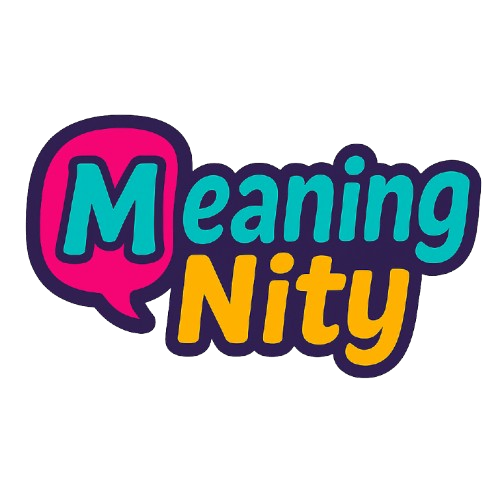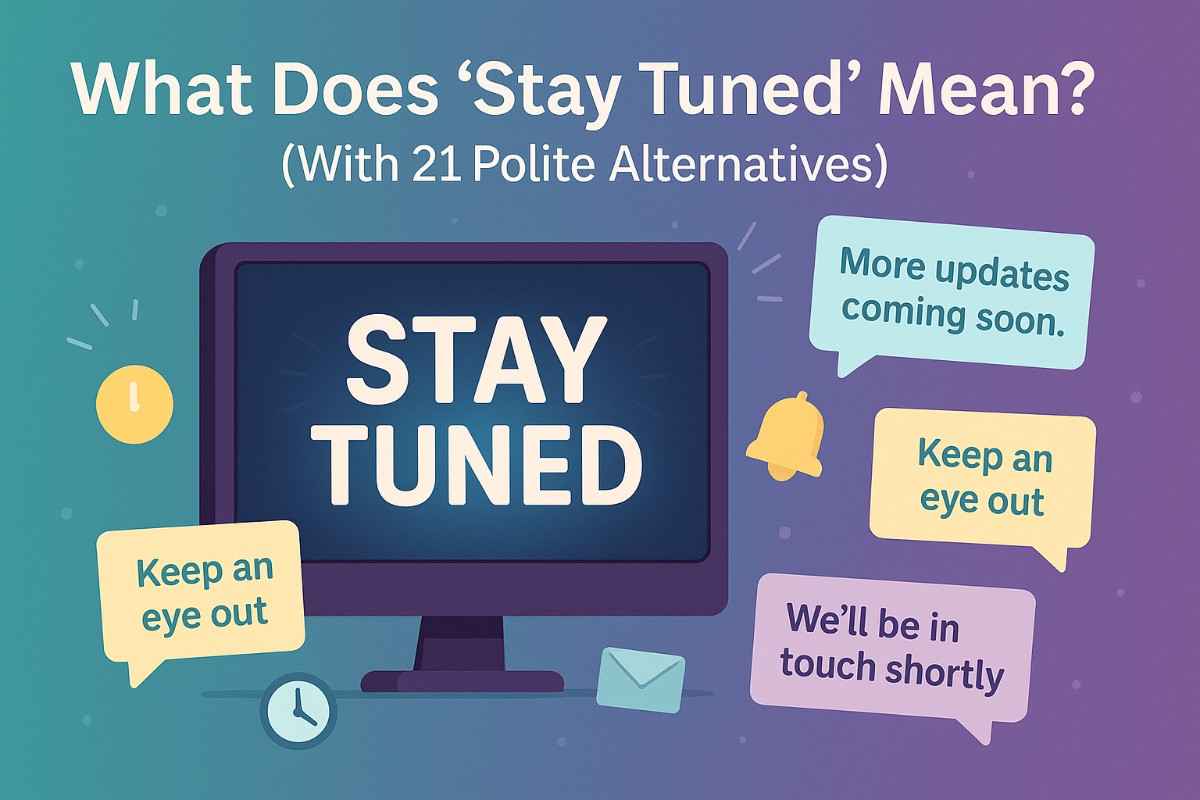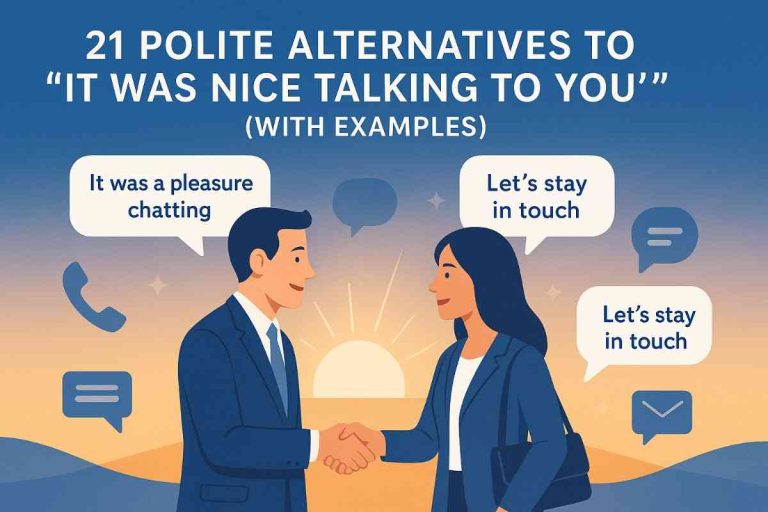What Does “Stay Tuned” Mean? (With 21 Polite Alternatives)
Language is full of small phrases that carry big meaning. One of them is “Stay tuned.” You have heard it on TV, radio, social media, or even in business emails. It looks simple but does a lot of work. It builds curiosity, holds attention, and signals more information is coming.
People use “Stay tuned” to keep readers, viewers, or listeners interested. It’s common in marketing, news, entertainment, and even casual chat. But the phrase can sound overused, vague, or a little old-fashioned in some settings. That’s why many look for fresh and polite alternatives.
This guide explains what “Stay tuned” means, when to use it, and what to say instead. You’ll also see examples and tone notes for each option so you can choose the right phrase every time.
What Does “Stay Tuned” Mean?
The phrase “Stay tuned” comes from the early days of radio and television. Back then, audiences had to “tune” their devices to a frequency. Broadcasters used the phrase to tell listeners not to change the dial because more was coming.
Today, it works as a call to action. It asks people to wait for more updates, news, or content. It signals continuity. It’s also a tool for building suspense or engagement.
In short, “Stay tuned” means: Don’t leave. Keep watching, listening, or reading. Something else is on the way.
When & Where to Use “Stay Tuned”
“Stay tuned” works well in many situations:
- Marketing and social media: Brands use it to tease product launches.
- News and broadcasting: Journalists say it before going to a break.
- Business communication: Teams use it in emails before an announcement.
- Casual chat: Friends may say it when planning a surprise.
But you must be careful. It can sound overdone in formal settings or when people expect clarity. If your audience values direct information, “Stay tuned” may feel vague.

Explore This Topic: “It Was Nice Talking to You” – When and How to Use It
21 Alternatives to “Stay tuned”
Here are 21 polite alternatives you can use. Each one comes with its meaning, explanation, example, best use, worst use, and tone so you know exactly how to apply it.
1. “More updates coming soon.”
Meaning: Information will follow shortly.
Explanation: Simple and clear. Great for business or professional use.
Example: “We’re finalizing details. More updates coming soon.”
Best Use: Emails, newsletters, press releases.
Worst Use: Casual chat—it may sound too formal.
Tone: Professional and direct.
2. “Stay connected.”
Meaning: Keep in touch for future news.
Explanation: Warmer than “Stay tuned.” It emphasizes relationship.
Example: “Follow us online and stay connected for news.”
Best Use: Marketing, brand community messages.
Worst Use: Newsrooms—it lacks urgency.
Tone: Friendly and engaging.
3. “We’ll keep you posted.”
Meaning: We’ll share news as soon as we have it.
Explanation: A common casual alternative.
Example: “We’ll keep you posted about the schedule.”
Best Use: Team chats, personal updates, informal work.
Worst Use: Formal business writing.
Tone: Relaxed and conversational.
4. “Watch this space.”
Meaning: Pay attention here for future news.
Explanation: Often used online or in blogs.
Example: “Big announcement next week. Watch this space.”
Best Use: Blogs, social media, creative writing.
Worst Use: Spoken chat—it may sound odd.
Tone: Teasing and playful.
5. “Check back soon.”
Meaning: Come again for updates.
Explanation: Invites people to return.
Example: “Our site is updating. Check back soon.”
Best Use: Websites, apps, customer notices.
Worst Use: Formal press or corporate reports.
Tone: Helpful and polite.
6. “Stay updated.”
Meaning: Keep following for news.
Explanation: Short and neat.
Example: “Sign up for our newsletter to stay updated.”
Best Use: Marketing, newsletters, app notifications.
Worst Use: Casual one-to-one chat.
Tone: Informative and professional.
7. “Updates on the way.”
Meaning: Information is coming.
Explanation: Works like “Stay tuned” but fresher.
Example: “We know you’re curious. Updates on the way.”
Best Use: Social posts, internal team updates.
Worst Use: Formal contracts or letters.
Tone: Light and modern.
8. “Keep an eye out.”
Meaning: Be alert for news.
Explanation: Informal, often spoken.
Example: “Keep an eye out for our next release.”
Best Use: Friendly announcements, casual business.
Worst Use: Academic or formal writing.
Tone: Relaxed and friendly.
9. “Stay with us.”
Meaning: Don’t leave. We have more.
Explanation: Often used in TV and live events.
Example: “Stay with us. We’ll be right back.”
Best Use: Broadcasting, events, webinars.
Worst Use: Written text outside media.
Tone: Warm and engaging.
10. “Keep watching.”
Meaning: Don’t stop now, more is ahead.
Explanation: Works in video or streaming settings.
Example: “Keep watching for bonus content.”
Best Use: Video, YouTube, live streams.
Worst Use: Emails or print text.
Tone: Direct and casual.
11. “Stay informed.”
Meaning: Make sure you get the facts.
Explanation: Appeals to knowledge and clarity.
Example: “Sign up to stay informed on policy changes.”
Best Use: Newsletters, government updates, education.
Worst Use: Casual or playful posts.
Tone: Serious and professional.
12. “Hold tight.”
Meaning: Wait patiently.
Explanation: Informal, often spoken.
Example: “Hold tight, details coming soon.”
Best Use: Personal updates, relaxed business chat.
Worst Use: Serious or formal settings.
Tone: Friendly and casual.
13. “Stay alert.”
Meaning: Pay attention for new info.
Explanation: Urgent and strong.
Example: “Stay alert for weather warnings.”
Best Use: Safety alerts, urgent messages.
Worst Use: Light marketing—it may feel harsh.
Tone: Serious and direct.
14. “Keep checking in.”
Meaning: Return often for news.
Explanation: Encourages repeated visits.
Example: “Keep checking in for weekly updates.”
Best Use: Blogs, websites, customer updates.
Worst Use: Broadcast or live TV.
Tone: Inviting and polite.
15. “Stay close.”
Meaning: Remain near for updates.
Explanation: More emotional and warm.
Example: “Stay close, we’ll share news soon.”
Best Use: Marketing, community groups.
Worst Use: News or factual writing.
Tone: Caring and personal.
16. “Don’t miss out.”
Meaning: Act soon or you’ll miss something.
Explanation: Creates urgency.
Example: “Don’t miss out on our launch news.”
Best Use: Sales, marketing, events.
Worst Use: Formal writing.
Tone: Energetic and persuasive.
17. “Keep following along.”
Meaning: Continue with us.
Explanation: Friendly and clear.
Example: “Keep following along for updates.”
Best Use: Social media, podcasts, blogs.
Worst Use: Newsrooms or government reports.
Tone: Relaxed and inviting.
18. “Stay engaged.”
Meaning: Keep paying attention.
Explanation: Works best in business and education.
Example: “Stay engaged as we share next steps.”
Best Use: Meetings, workshops, training.
Worst Use: Lighthearted marketing.
Tone: Serious and active.
19. “Wait for it.”
Meaning: Something is about to happen.
Explanation: Builds suspense.
Example: “Wait for it… big news is here.”
Best Use: Social posts, playful chats.
Worst Use: Formal writing or serious updates.
Tone: Fun and teasing.
20. “Keep following.”
Meaning: Stay with us on the journey.
Explanation: Encourages continuity.
Example: “Keep following our page for news.”
Best Use: Social media, content creators.
Worst Use: Business letters or reports.
Tone: Light and casual.
21. “Stay in the loop.”
Meaning: Remain informed and updated.
Explanation: A modern, friendly phrase.
Example: “Join our email list to stay in the loop.”
Best Use: Team chat, business, casual marketing.
Worst Use: Very formal announcements.
Tone: Warm and inclusive.
Simple and Polite Responses to “Stay tuned”
Sometimes, you’ll hear or read “Stay tuned.” What should you reply? Here are some polite options:
- “Thanks, looking forward to it.”
- “Got it, I’ll wait for updates.”
- “Appreciate the heads-up.”
- “Sounds good, I’ll keep an eye out.”
- “Great, I’ll be ready.”
These responses show interest and respect without sounding stiff.
Conclusion
“Stay tuned” is short, familiar, and useful. But language thrives on variety. By using alternatives, you can adjust your tone to the audience and setting. Some phrases are professional, others casual, and some add excitement.
Whether you say “Stay connected,” “We’ll keep you posted,” or “Stay in the loop,” the key is clarity. Match the phrase to the tone and the context. That way, your message is not only polite but also effective.







